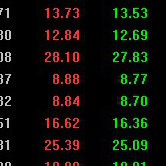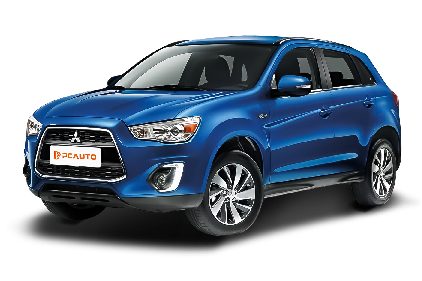Q
What is the eco mode of Mitsubishi ASX?
The eco mode of the Mitsubishi ASX is specifically designed for more fuel - efficient driving. In this mode, the vehicle undergoes several adjustments. It typically optimizes the engine's operation, slightly reducing the power output to cut down on fuel consumption. This optimize may involve adjusting the throttle response. When you press the accelerator pedal, the engine receives less fuel than in normal mode, resulting in smoother acceleration.
The shifting logic of the transmission is also modified. It tends to shift gears earlier, keeping the engine at a lower revolutions per minute (RPM), which allows the engine to burn fuel more efficiently.
The eco mode may also affect the air - conditioning control system. It reduces the energy consumption of the air - conditioning to some extent without significantly impairing comfort. In this way, the fuel costs will be reduced during your daily driving, especially in urban traffic or when you don't need maximum power. However, it's important to note that when you need rapid acceleration, such as overtaking on the highway, you may need to switch out of the eco mode to get more agile performance.
Special Disclaimer: This content is published by users and does not represent the views or position of PCauto.
Related Q&A
Q
What tyre pressure for 2018 Mitsubishi ASX?
The recommended standard tire pressure for the 2018 Mitsubishi ASX usually ranges from 32 to 35 psi (pounds per square inch). The specific value may vary slightly depending on the vehicle configuration, tire size, or load. Owners can refer to the vehicle's user manual or the label on the driver's door frame to get accurate information.
In Malaysia's tropical climate, tire pressure will rise slightly due to high temperatures. Therefore, it is recommended to check and adjust the tire pressure in the morning or when the tires are cool to ensure driving safety and fuel efficiency. Proper tire pressure can not only extend the tire life but also improve the vehicle's handling and comfort. On the contrary, too high or too low tire pressure may lead to uneven tire wear, reduced grip, and even the risk of tire blow - out.
If you often drive long - distance or carry heavy loads, you can consider slightly increasing the rear tire pressure to the upper limit of the recommended range, but avoid exceeding the maximum pressure rating marked on the tire. Regularly checking tire pressure is an important part of vehicle maintenance. It is recommended to check at least once a month and use a reliable tire pressure gauge or the professional equipment at gas stations for measurement.
Q
Is the 2018 Mitsubishi ASX a 4x4?
The 2018 Mitsubishi ASX available in the Malaysian market doesn't come standard with a four - wheel drive (4x4) system. Instead, it mainly features front - wheel drive (FWD), which is different from the 4WD versions offered in some overseas markets. As a compact SUV, the ASX focuses on fuel economy and practicality for city driving. Its power combination of a 2.0 - liter MIVEC engine paired with a CVT transmission is more suitable for daily commuting. If you need the 4x4 function, you can consider other Mitsubishi models like the Triton pickup or the Pajero Sport, which are designed for off - road use and are more popular in the local market.
It's worth noting that Malaysian consumers usually pay more attention to on - road performance and cost - effectiveness when choosing an SUV. The positioning of the ASX exactly meets this demand, and its low maintenance cost and reliable quality are also the reasons for its popularity. For users who occasionally need light off - road driving, it's recommended to focus on the vehicle's ground clearance (the ASX has about 195mm) and electronic assistance systems, rather than insisting on a four - wheel drive configuration. After all, the 4x4 systems of most city SUVs are used less frequently and will increase the purchase and maintenance costs.
Q
Does the 2018 Mitsubishi ASX have a 360 camera?
The 2018 Mitsubishi ASX didn't come standard with a 360 - degree panoramic camera in the Malaysian market. At that time, the model mainly offered a reversing camera as an auxiliary driving configuration. The more advanced 360 - degree surround - view imaging system usually appeared in the top - of - the - line versions or subsequent facelifted models. If car owners wish to upgrade this function, they can install it through the original manufacturer or third - party certified modification plans, but they need to pay attention to compatibility and warranty terms.
The 360 - degree camera achieves all - round monitoring through multi - lens splicing technology, which is especially useful for parking in narrow roads or off - road scenarios. In recent years, it has become a popular configuration for SUVs in the Malaysian market. For example, models like the Proton X90 and Toyota Corolla Cross both offer similar functions.
It is recommended that consumers confirm the original factory configuration list with authorized dealers via the VIN code before purchasing a used car or making modifications, or refer to the automotive specification manuals recognized by MITI to obtain accurate information. The popularity of such driving - assistance technologies also reflects the increasing demand for driving safety among Malaysian consumers. Additionally, it is advisable to regularly clean the camera lenses to ensure clear imaging.
Q
Does the 2018 ASX have Apple CarPlay?
Some models of the 2018 Mitsubishi ASX in the Malaysian market are indeed equipped with the Apple CarPlay function. However, it specifically depends on the vehicle's configuration level. It is recommended that car owners check the original factory specification sheet or directly contact Mitsubishi's Malaysian dealers to confirm whether their vehicles support this function, as there may be differences in configurations across different regions. As an intelligent in-vehicle system, Apple CarPlay can connect to an iPhone via USB to enable functions such as navigation, music playback, and making calls, significantly enhancing driving convenience. It should be noted that if your ASX does not come pre-installed with this function, you can later achieve it by upgrading the head unit or installing an additional module. However, it is essential to choose an officially certified modification plan to ensure compatibility and driving safety. Other SUVs in the same class, such as the Honda HR - V or the Mazda CX - 3, also gradually popularized smartphone connectivity functions around the same time, which reflects the trend of automotive technology towards intelligent development. In Malaysia's hot and rainy climate, when using CarPlay, it is advisable to keep your phone and the in-vehicle system updated to the latest versions to avoid device malfunctions caused by high temperatures. Additionally, the anti-glare design of the original factory screen can also improve operational safety under the scorching sun.
Q
What are the features of the Mitsubishi ASX 2018?
The 2018 Mitsubishi ASX is a highly - regarded compact SUV in the Malaysian market. Its main features include a stylish exterior design. It adopts Mitsubishi's family - style Dynamic Shield front face, paired with LED daytime running lights and 18 - inch wheels. The overall shape is both dynamic and practical.
In terms of the interior, the 2018 ASX is equipped with a 7 - inch touchscreen infotainment system that supports Apple CarPlay and Android Auto, making it convenient for users to connect their smartphones. It also offers a reverse camera and a multifunctional steering wheel to enhance driving convenience.
Regarding power, it is powered by a 2.0 - liter MIVEC four - cylinder gasoline engine with a maximum output of 150 horsepower. Matched with a CVT transmission, it provides a smooth driving experience. There are both front - wheel drive and four - wheel drive versions available, which are suitable for urban commuting and light off - road needs.
In terms of safety configuration, the 2018 ASX comes standard with 7 airbags, ABS, EBD, and a vehicle stability control system to meet daily safety requirements. For Malaysian consumers, the 2018 ASX also has relatively economical fuel consumption, making it suitable for family use. Meanwhile, its high ground clearance and reliable suspension system can adapt to the diverse local road conditions.
It's worth mentioning that Mitsubishi ASX has a well - established after - sales service network in the Malaysian market, providing additional assurance for car owners. This vehicle offers outstanding cost - effectiveness among its peers, making it suitable for consumers with a limited budget who still pursue practicality and brand reliability.
Q
What is the fuel consumption of a 2018 Mitsubishi ASX?
The fuel consumption of the 2018 Mitsubishi ASX varies depending on the specific model and driving conditions. According to official data, the version with a 2.0-liter naturally aspirated engine paired with a CVT transmission consumes about 8.5 - 9.2 liters per 100 kilometers in city driving conditions. When driving on the highway, it can drop to 6.3 - 6.8 liters per 100 kilometers, and the combined fuel consumption is approximately 7.2 - 7.6 liters per 100 kilometers. The actual fuel consumption is also affected by driving habits, road conditions, and the vehicle's maintenance status.
For users in Malaysia, considering the hot local climate and frequent traffic congestion, it is recommended to have the vehicle regularly maintained and keep the tire pressure at an appropriate level to ensure fuel efficiency. In addition, using the air - conditioning system reasonably and avoiding sudden acceleration and braking can also effectively reduce fuel consumption.
As a compact SUV, the Mitsubishi ASX is popular in the Malaysian market for its reliability and practicality. It is suitable for daily family use and long - distance travel. If you have higher requirements for fuel consumption, you can consider hybrid or pure - electric models. However, with the infrastructure support in Malaysia, traditional fuel - powered vehicles are still a convenient choice.
Q
How much power does a 2018 Mitsubishi ASX have?
The 2018 Mitsubishi ASX's powertrain configurations available in the Malaysian market vary by version. It is equipped with a 2.0-liter MIVEC naturally aspirated gasoline engine, with a maximum output power of 150 horsepower (110 kilowatts) and a peak torque of 197 Newton-meters. It is mated to a 5-speed manual or a CVT continuously variable transmission, and its power performance is suitable for urban driving and light off-road needs. This compact SUV continues Mitsubishi's tradition of durability. The chassis tuning balances comfort and stability, and its fuel economy meets the needs of Southeast Asian users.
It's worth mentioning that the exclusive Mitsubishi MIVEC variable valve timing technology used in the ASX can optimize power output and fuel consumption at different speeds. Meanwhile, Japanese competitors in the same class, such as the Honda HR-V or the Toyota C-HR, tend to have a more sporty tuning style, allowing consumers to choose according to their driving preferences.
In Malaysia's hot and rainy climate, it is recommended to regularly check the condition of the CVT transmission fluid to ensure long-term stable performance. Additionally, the five-year warranty policy provided by the manufacturer can offer extra protection for car owners.
Q
What size engine is in the 2018 Mitsubishi ASX?
The 2018 Mitsubishi ASX offers two gasoline engine options in the Malaysian market, namely the 1.6-liter and 2.0-liter MIVEC naturally aspirated engines. The 1.6-liter engine (model 4A92) can output 114 horsepower and 149 Nm of torque, while the 2.0-liter engine (model 4B11) provides 150 horsepower and 197 Nm of torque. Both are paired with the INVECS-III continuously variable transmission (CVT). This powertrain configuration balances the smoothness of daily driving and fuel economy.
It's worth mentioning that the MIVEC technology intelligently adjusts the valve timing and lift, optimizing the power output and fuel consumption at different engine speeds. It's very suitable for the usage scenarios in Malaysia, including city driving and occasional long - distance travels.
As a compact SUV from Mitsubishi, the engine displacement of the ASX is at the mainstream level among its peers. For example, the Honda HR - V also offers a 1.8 - liter engine option, while the Mazda CX - 3 uses a 2.0 - liter engine. Consumers can make a choice based on their own power requirements and road tax budget (in Malaysia, the higher the engine displacement, the higher the road tax).
In addition, the maintenance cost of the ASX is relatively affordable, and there is an abundant supply of local parts. This is also one of the factors considered by many Malaysian car owners.
Q
How much oil does a 2018 Mitsubishi ASX engine take?
The engine oil capacity of the 2018 Mitsubishi ASX varies depending on the engine model. The version equipped with the 1.6-liter 4A92 engine usually requires about 3.7 liters of oil (including the capacity when replacing the oil filter), while the version with the 2.0-liter 4B11 engine needs about 4.3 liters of oil. It is recommended to use 5W - 30 or 10W - 30 viscosity oil that meets the original factory specifications to ensure optimal performance.
In the hot and humid climate of Malaysia, regular oil changes are particularly important. Generally, it is recommended to change the oil every 5,000 to 10,000 kilometers or every 6 months. The specific interval can refer to the owner's manual or the advice of an authorized service center.
It should be noted that when changing the oil, the oil filter should be replaced at the same time, and the oil level should be between the MIN and MAX marks on the dipstick. Excessive or insufficient oil may affect the engine's lifespan. In addition, choosing synthetic oil with API SN or higher certification can provide better high - temperature protection performance, which is especially suitable for the high - temperature driving environment in Malaysia.
If you're not sure about the exact oil capacity of your vehicle, the safest way is to check the vehicle manual or consult a Mitsubishi authorized service center. They can offer professional advice based on your vehicle configuration.
Q
Is the 2018 Mitsubishi ASX AWD or 4WD?
The 2018 Mitsubishi ASX is available in two drivetrain versions in the Malaysian market: Front-Wheel Drive (FWD) and Four-Wheel Drive (4WD). However, it doesn't come with an All-Wheel Drive (AWD) system. The 4WD system of the ASX is a part-time four-wheel drive. Usually, it automatically distributes power to the rear wheels only when the front wheels start to slip. It's suitable for occasional encounters with slippery roads or light off-road situations, which is more than enough for Malaysia's rainy climate and urban commuting.
It's worth noting that the main difference between AWD and 4WD is that AWD is typically full-time and doesn't require manual switching, while 4WD is often used in off-road vehicles and may have a transfer case. Mitsubishi's 4WD system is well - known for its reliability and practicality. As a compact SUV, the 4WD version of the ASX strikes a good balance between fuel economy and passability. It's a great fit for Malaysian users who occasionally need to handle rough roads but don't want to sacrifice their daily driving comfort.
Popular Cars
Model Year
Car Compare
Car Photo
Latest Q&A
Q
Does the 2019 Golf GTI have a timing belt or chain?
The 2019 Golf GTI uses a timing chain instead of a timing belt—a design that offers better durability and lower maintenance costs. Typically, a chain lasts as long as the engine itself and rarely needs replacement, whereas a belt requires inspection or replacement every 60,000 to 100,000 km. If neglected, a worn belt can snap and cause severe engine damage.
VW’s EA888 engine family has long relied on chain-driven systems, which are relatively quiet and highly reliable. That said, it’s crucial to periodically check the tensioner’s condition. Some earlier models experienced timing issues due to tensioner design flaws, but this was addressed in the 2019 version.
For performance enthusiasts, a chain system handles high-revving stress better, making it a common choice for hot hatches like the GTI. For daily driving, just stick to VW 50400/50700-spec oil as recommended in the manual—proper lubrication keeps the chain system healthy long-term.
One heads-up: If you hear noticeable metallic rattling near the front of the engine, have the guides or tensioner inspected ASAP. Unlike the telltale belt squeal before failure, this noise is a classic sign of chain-related wear.
Q
What is the recall on the 2019 GTI?
The 2019 Volkswagen Golf GTI was subject to a safety recall addressing two potential issues. First, the fuel pump control unit software could malfunction, potentially causing engine stalling in rare cases. Second, some vehicles might have rear suspension stabilizer link bolts that weren't tightened to specification, posing a loosening risk. Owners can visit authorized dealers for free software updates or bolt retightening.
These proactive recalls demonstrate Volkswagen's commitment to safety. Dealers often handle outstanding recall items during routine maintenance.
For performance-oriented models like the GTI, it's wise to go beyond recall checks. Pay close attention to the turbo system, DSG transmission fluid, and brake wear—these components endure more stress during spirited driving. If warning lights appear or you notice unusual noises, get a professional inspection promptly. Keeping the car in top shape ensures you can fully enjoy its dynamic capabilities.
Q
Does the 2019 GTI require premium gas?
The 2019 GTI does recommend using high-octane fuel (typically RON 95 or above). Its 2.0L turbocharged engine has a relatively high compression ratio, and premium gas ensures optimal performance while reducing knock risk. It also helps maintain engine cleanliness and long-term reliability.
While the car may tolerate lower-octane fuel (like RON 92), you’d see slightly reduced power output and fuel efficiency. Over time, it could also affect engine longevity. Turbocharged engines are particularly sensitive to octane ratings since turbos generate higher heat and pressure—high-octane fuel handles these conditions better.
Mixing different fuel grades occasionally won’t hurt, but sticking to the manufacturer’s recommendation is ideal. Also, periodic fuel additive treatments can help clean carbon buildup, especially for direct-injection engines.
One more thing: even with the same octane rating, fuel additive packages vary by brand. So, picking a reputable gas station matters too.
Q
How long will a 2019 GTI last?
The lifespan of a 2019 GTI largely depends on maintenance and driving habits. With regular oil changes, transmission fluid replacements, and avoiding aggressive driving, it can easily clock over 200,000 kilometers—or even more. Its 2.0T engine and DSG gearbox are proven combos, and as long as you stick to the factory service schedule, mechanical reliability won’t be an issue.
Just keep in mind: turbocharged engines demand extra care. Always use the right spec full-synthetic oil and monitor the cooling system. Climate plays a role too—hot, humid conditions mean paying extra attention to rubber seals and electronics. Every 50,000 km, have the timing chain and high-pressure fuel pump inspected (key items for turbos).
Driving style matters. Don’t redline it constantly, and let the engine warm up properly after cold starts. Rustproofing helps long-term durability, so regular underbody washes are smart. Nail these details, and this car’s built to last.
Q
How fast is the 2019 GTI?
The 2019 GTI truly delivers when it comes to performance. Under the hood lies a punchy 2.0-liter turbocharged four-cylinder, churning out 228 horsepower and 350 Nm of torque. Whether you opt for the engaging 6-speed manual or the lightning-fast 7-speed DSG, this hot hatch rockets from 0-100 km/h in just 6.3 seconds, with an electronically limited top speed of 250 km/h.
What really sets the GTI apart is its razor-sharp handling. The sport-tuned suspension and electronic differential lock work together to deliver precise steering and rock-solid cornering stability. It’s the perfect blend of everyday practicality and proper driver’s car thrills—a well-rounded hot hatch in every sense.
For enthusiasts, the GTI’s tuning potential is massive. Many owners go for ECU remaps or intake/exhaust upgrades to squeeze out even more power. Just remember to keep things street-legal—safety and compliance should always come first. Around here, these pocket rockets have a solid following, and it’s easy to see why.
View MoreRelated News

Mitsubishi Lancer Evolution might be resurrected, so what will the new Evo look like?
WilliamNov 14, 2025

Choose Honda HR-V or Mitsubishi XPANDER for a family car?
WilliamNov 12, 2025

Toyota HiAce and Mitsubishi Outlander upgraded to receive five-star safety rating
WilliamSep 24, 2025

Mitsubishi Cuts Full-Year Profit Forecast by 30%, Challenged by US Tariffs and Intensified Global Competition
Kevin WongAug 28, 2025

Mitsubishi to Launch Electric Vehicle Based on Nissan Leaf in Second Half of 2026
LienMay 8, 2025
View More


















Pros
Cons